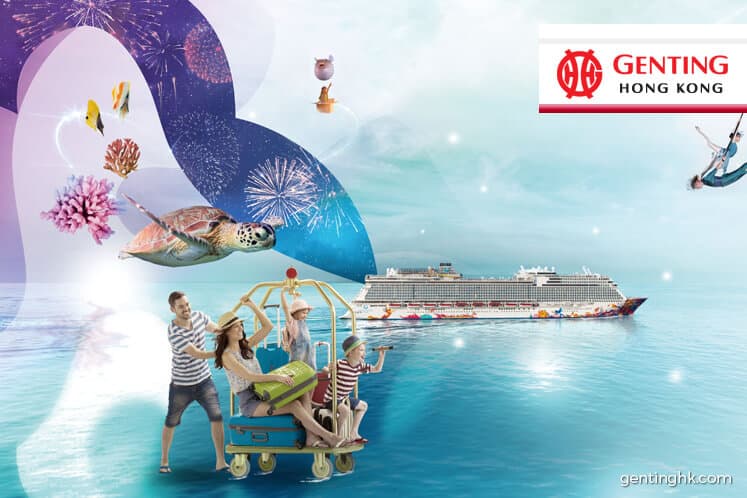
This article first appeared in The Edge Malaysia Weekly on June 26, 2017 - July 2, 2017
TO say that Genting Hong Kong Ltd (Genting HK), in which the Lim family has a controlling 68.87% stake, has seen better days would not be an exaggeration, at least at the moment. Indeed, the company seems to have been dealt a bad hand.
Apart from the uncertainty about the turnaround of its cruise division, despite the Lim family pumping big money into it for expansion in the past two years, the Philippine authorities have also cast a pall over the company’s sole source of income — Resorts World Manila.
After a botched robbery and arson incident on June 2 at RWM — in which associate company Travellers International Hotel Group Ltd holds a 45% stake — that resulted in 38 fatalities, the Philippine gaming regulator suspended the casino’s operations on June 9.
The suspension will continue until RWM “rectifies its serious security lapses and deficiencies”, says a CNN report, citing the Philippine Amusement and Gaming Corporation.
This is certainly a setback for the cruise ship and casino company (which has operations in Hong Kong and Singapore as well), given that RWM is its sole earnings contributor. In the financial year ended Dec 31, 2016 (FY2016), RWM contributed US$32.89 million to Genting HK’s bottom line.
It is worth noting that Genting Malaysia Bhd had owned a 16.87% stake in Genting HK but sold it to the Lim family last year, pocketing a whopping divestment gain of RM1.71 billion.
Genting HK’s core business is cruise ships. It operates the well-known Star Cruises, its premium Dream Cruises and the ultra-luxury Crystal Cruises. It also owns the Zouk club in Singapore.
The company has four shipyards under Germany-based Lloyd Werft Group — one each in Wismar, Warnemünde and Stralsund (acquired from Nordic Yard last year for €230.6 million) and the fourth in Bremerhaven (acquired in 2015). Lloyd Werft Group is one of the four largest cruise ship builders in the world.
Shortly after the acquisition of the three shipyards from Nordic Yard, Genting HK placed an ambitious €3.5 billion order for 10 cruise ships — including two mega global-class ships for Star Cruises and eight for Crystal Cruises — with Lloyd Werft Group in an attempt to capture the flourishing Asian cruise market.
These vessels are due for delivery between 2019 and 2022.
Genting HK also invested more than €100 million in upgrading the yards because they did not have the capacity to build the ships, which the group wanted fast.
The Edge reported last year that Genting HK was racing to get the best ships out as soon as possible in order to secure a leading position in Asia, especially China, as cruise passengers were expected to reach 4.5 million by 2020 from 700,000 in 2014. Genting officials, citing the Shanghai International Shipping Institute’s China Shipping Development Outlook Report, said the figure was seen growing to between 8 million and 10 million by 2030.
However, competition for the Chinese market has already heated up.
“The China cruise market, which was originally Genting HK’s targeted market for its upcoming mega ships, is seeing a price war as new industry capacity growth has outstripped demand. We believe Genting HK’s first mega cruise ship, Genting Dream, has managed an average occupancy rate of only 80%,” says UOB Kay Hian Research analyst Vincent Khoo in a report.
“In contrast, US cruise ships typically command an occupancy rate of more than 100% for lower berth capacity, which means Genting Dream will need to significantly lift its occupancy rate for Ebitda to break even.”
Khoo adds in the report that he is expecting Genting HK’s loss from its cruise division to widen in FY2017 from US$106.23 million in the previous year. “On top of the pre-operating costs from the new Dream and Crystal ships (which debuted in 2H2016), the newly acquired shipyard operation could have extended its operating loss (the shipyard accounted for the bulk of the company’s loss in FY2016). Most of Genting HK’s new ship building plans are still in the design stage and will not translate into revenue for the shipyard.”
Khoo has downgraded the stock, which is listed on the Singapore Exchange, to a “sell” and lowered his target price to US$0.26 from US$0.28 previously to reflect the cessation of gaming operations in RWM and, more importantly, the stiff competition in the Asian cruise market where he sees further losses for the cruise business.
In FY2016, Genting HK slipped into the red, posting a net loss of US$504.23 million. In FY2015, it had recorded a net profit of US$2.11 billion, thanks to a gain from the disposal of 10 million shares in its then associate Norwegian Cruise Line Holdings Ltd.
The net loss in FY2016 came despite the company seeing a 47.4% year-on-year increase in revenue to US$1.02 billion.
Year to date, Genting HK, which is also listed on the Hong Kong stock exchange, has appreciated 3.4%. It closed at HK$2.43 last Wednesday, shedding 56% from a high of HK$3.79 in May 2013.
Save by subscribing to us for your print and/or digital copy.
P/S: The Edge is also available on Apple's AppStore and Androids' Google Play.